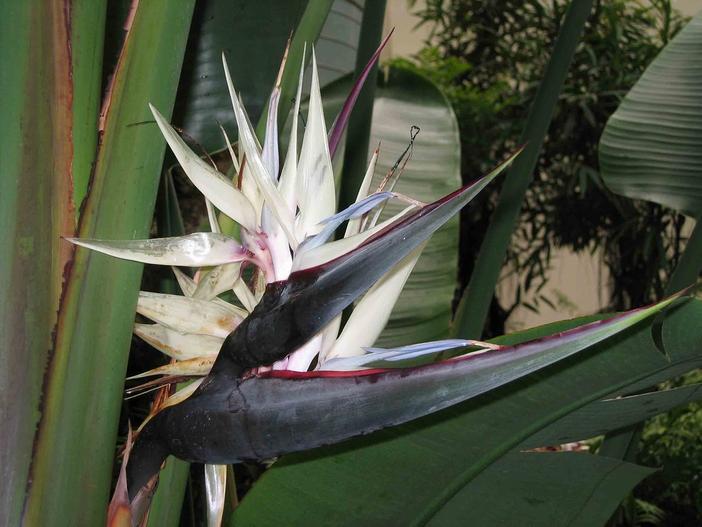Giant White Bird Of Paradise
(Strelitzia nicolai)
Giant White Bird Of Paradise (Strelitzia nicolai)
/
/

阿橋花譜 HQ Flower Guide
CC BY-SA 2.0
Image By:
阿橋花譜 HQ Flower Guide
Recorded By:
Copyright:
CC BY-SA 2.0
Copyright Notice:
Photo by: 阿橋花譜 HQ Flower Guide | License Type: CC BY-SA 2.0 | License URL: https://creativecommons.org/licenses/by-sa/2.0/ | Uploader: 阿橋 KHQ | Publisher: Flickr






































































Estimated Native Range
Summary
Strelitzia nicolai, commonly known as the Giant White Bird of Paradise or Wild Banana, is a perennial herbaceous plant native to coastal forests and riverine areas of South Africa. It is closely related to the common bird of paradise (Strelitzia reginae) but is much larger, reaching heights of 7–8 meters (23–26 feet) with clumps spreading up to 3.5 meters (11 feet) wide. The large, grey-green leaves are banana-like, measuring up to 1.8 meters (5 feet 11 inches) in length, and are arranged in a fan-like pattern at the top of the stems. The striking inflorescence resembles a bird’s head and consists of a dark blue bract, white sepals, and a bluish-purple "tongue," with the entire flower reaching up to 18 cm (7.1 inches) in height and 45 cm (18 inches) in length. Flowering typically occurs in the warmer months, and the flowers are exceptionally showy. After flowering, it produces triangular seed capsules.
The Giant White Bird of Paradise is valued for its dramatic foliage and architectural form, making it a popular choice for tropical and subtropical landscapes, as well as indoor plantings in cooler climates. It is often used as a focal point in garden designs, and its ability to tolerate light frost extends its use to some temperate regions. The plant thrives in rich, moist soils with good drainage and can be grown in full sun to part shade. It requires high amounts of water, especially during the growing season. While it is relatively easy to maintain, it can take many years to flower and may become invasive due to its vigorous root system, which should be kept away from buildings. Propagation is typically done through division, offsets, or seeds.CC BY-SA 4.0
The Giant White Bird of Paradise is valued for its dramatic foliage and architectural form, making it a popular choice for tropical and subtropical landscapes, as well as indoor plantings in cooler climates. It is often used as a focal point in garden designs, and its ability to tolerate light frost extends its use to some temperate regions. The plant thrives in rich, moist soils with good drainage and can be grown in full sun to part shade. It requires high amounts of water, especially during the growing season. While it is relatively easy to maintain, it can take many years to flower and may become invasive due to its vigorous root system, which should be kept away from buildings. Propagation is typically done through division, offsets, or seeds.CC BY-SA 4.0
Plant Description
- Plant Type: Shrubs, Trees
- Height: 15-30 feet
- Width: 6-8 feet
- Growth Rate: Moderate
- Flower Color: White
- Flowering Season: Fall, Winter
- Leaf Retention: Evergreen
Growth Requirements
- Sun: Full Sun, Part Shade
- Water: Medium
- Drainage: Medium
Common Uses
Bird Garden, Drought Tolerant, Potted Plant, Salt Tolerant, Showy Flowers
Natural Habitat
Coastal forests and riverine areas of South Africa
Other Names
Common Names: Giant Bird-Of-Paradise , Bird-Of-Paradise Tree , Natal Wild Banana , Wild Strelitzia , Natalstrelitzie , Vit Papegojblomma
Scientific Names: Strelitzia nicolai , Strelitzia alba subsp. nicolai , Strelitzia quensonii
GBIF Accepted Name: Strelitzia nicolai Regel & Körn.